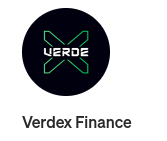
To enhance our mission of being an all-in-one environmentally friendly DeFi Suite, VerdeX is expanding into greener territories that will now encompass the NEAR blockchain. Like the Algorand network, NEAR is also carbon neutral, meaning that our expansion of VerdeX will not come at the expense of the environment. Rather, users of products in our VerdeX Suite can rest assured, in knowing that their participation will serve to enhance the greater good of humanity.
In addition to operating off its own protocol, the NEAR blockchain is avidly decentralized with a multitude of dedicated nodes around the world. Running on top of this effective foundation, is the NEAR dApp (decentralized application) platform, which consists of a conglomeration that includes an active community, ambitious foundation, and a plethora of educational resources. This holistic approach has been designed accordingly, and is deeply rooted in a systems-based thinking that is positioning NEAR quite favorably in the Web 3.0 future.
Amid this potential, NEAR also practically addresses some of the most prevailing challenges in the cryptocurrency industry, that includes the issues of scaling and onboarding. A common pattern has been that when the popularity of a given network increases, so do the congestion and fees, which inhibit further scaling and onboarding respectively. NEARs utilization of sharding, partitions off the protocol across many different participating nodes, in order to eliminate the burdens of these excessive computation and financial demands.
Furthermore, interoperability is becoming an essential component of any respectable DeFi project in the space today, as trends indicate that funds moving across various blockchains have been increasing rapidly since Q4 of ‘21. The EVM and Rainbow Bridge are tools on NEAR that are already available and functional for this purpose, while recent developments have also seen NEAR at the forefront of prominent multi-chain initiatives. Meanwhile the release of the USN, a native stablecoin on NEAR, should also contribute heavily towards the liquidity measures of the network.
With its synergistic combination of fundamentals and innovations, NEAR is also increasingly finding itself at a nexus between traditional institutional investors and the crypto space. Of course, this can be clearly evidenced by a $350 million funding round from a New York City hedge fund, but also through the aims of the NEAR Foundation, who have committed upwards of $800 million to fund their own ecosystem.
As a result, projects associated with the NEAR ecosystem have been gaining consistent and considerable access to funding, with one immediate example being a lending and stablecoin swap protocol, which just raised a $9 million Series A round. In a fashion not dissimilar to the Algorand network, entrepreneurs and creators alike, are flocking to NEAR to experience the benefits of the decentralized digital economy. The integration of NFTs for instance, in both the gaming and music industries, have already shown valuable use cases of the transformations that Web 3.0 technology can facilitate.
From a development standpoint, NEAR supports Rust and AssemblyScript for the writing of its smart contracts, along with Web Assembly (WASM) for its nodes. Each of these languages are commonly used across the programming realm, and serve to accommodate the needs of developers, rather than forcing them to learn entirely an new language. Meanwhile, NEAR has made it a point to always keep the end user in mind, and have even built in processes where developers can assist in onboarding users.
All in all, the overall capabilities of NEAR made it not only a logical choice, but an ideal fit for what we’re striving to accomplish at VerdeX. Yet while NEAR certainly will provide us with an abundance of opportunities to succeed, there are also many ways that we envision ourselves adding our own unique value to the network. To begin with, the DEX and launchpad landscape on NEAR are still in their infancy, meaning that the VerdeX AMM and VerdeX Starter will undoubtedly be welcome additions into the ecosystem, as we plan to launch them this quarter.
Although NEAR has made much headway in regards to interoperability, there are still no valid bridges between its blockchain and Algorand. As such, there is promising room here for development by VerdeX that would grant us exposure in both the functional and marketing sense. Nevertheless, under the guise of the proactive NEAR Foundation, it also not unlikely that these aspects of our USP (unique selling proposition) could grant us access to further support and capital within this booming network.